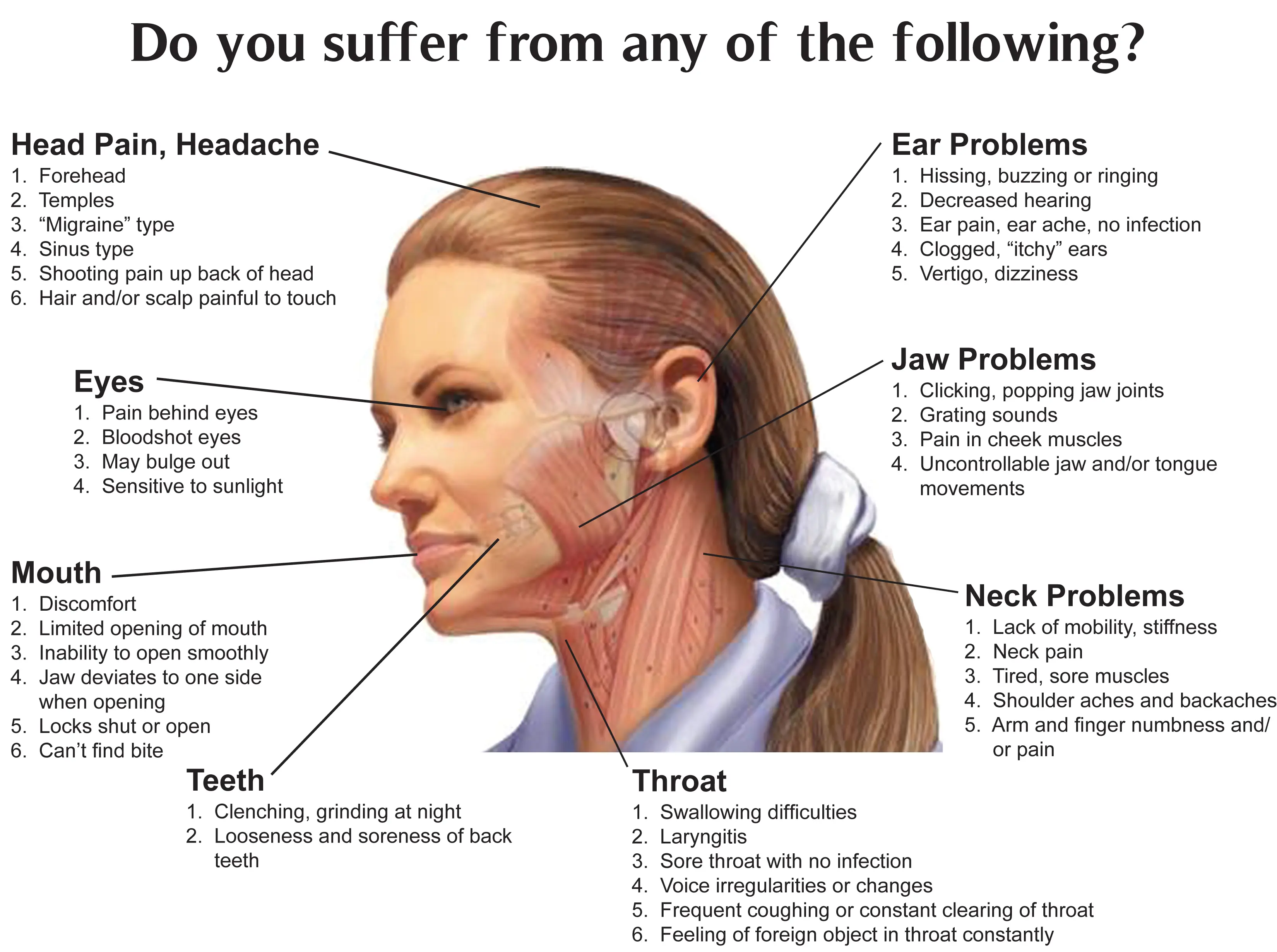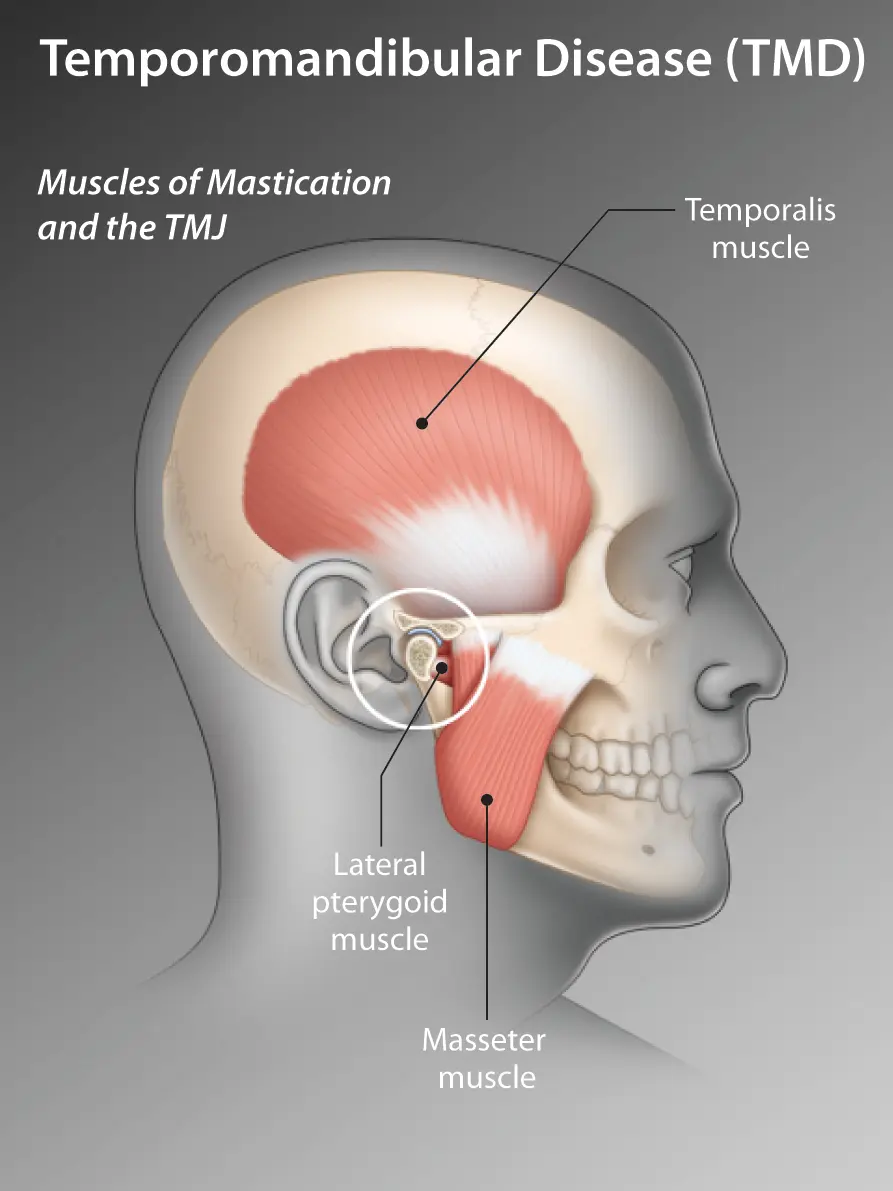Can Temporomandibular Joint Dysfunction be Cured?
Depends on cause
Management aims to reduce symptoms, improve jaw function; outcomes vary

What is Temporomandibular Joint Dysfunction?
Temporomandibular joint dysfunction (TMJ) involves pain and dysfunction in the jaw joint. Treatment may include lifestyle modifications, physical therapy, and in some cases, surgery. Regular monitoring is important for assessing jaw function, managing symptoms, and preventing complications.

Clinical Aspects

Characteristics
Jaw joint and muscle disorder often causing pain and dysfunction

Symptoms
Jaw pain, difficulty chewing, clicking or popping sounds

Diagnosis
Clinical examination, sometimes imaging studies

Prognosis
Generally good with appropriate management and treatment

Complications
Impaired jaw function, complications of untreated TMJ dysfunction
Etiology and Treatment

Causes
Trauma, teeth grinding, arthritis

Treatments
Medications, physical therapy, splints, lifestyle changes, surgical options in severe cases

Prevention
Medications, physical therapy, splints, lifestyle changes, surgical options in severe cases
Public Health and Patient Perspectives

Epidemiology
Dysfunction of the jaw joint and surrounding muscles

Patient Perspectives
Management aims at relieving symptoms and improving jaw function
Please note that the information provided is based on the current understanding of these conditions and treatments may vary based on individual circumstances. Always consult with a healthcare provider for accurate information.
Share: